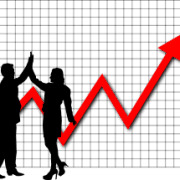Too close to the line: a convergence of culture, law and behavioral ethics
[This essay was originally posted at The Conflict of Interest Blog.]

Image via Wikimedia Commons.
To “walk the line” means something very different to those who prosecute business crime cases than it did to Johnny Cash. For instance, in a speech given last year, Steven L. Cohen, Associate Director for Enforcement at the Securities and Exchange Commission, said: “Where we find fraud, there are often early warning signs that may have suggested a corporate compliance culture that is not meeting appropriate standards….Risk-taking in the area of legal and ethical obligations invariably leads to bad outcomes. Any company or person prepared to come close to the line when it comes to legal and ethical standards is already on dangerous ground. Tolerating close-to-the-line behavior sends a terrible message throughout an organization that pushing the envelope is acceptable.” Similarly, and also in a speech last year, New York federal prosecutor Preet Bharaha said: “A single-minded focus on remaining an inch away from the legal line is just asking for trouble. It’s a dangerous thing to walk the line – and to train others to do it. Walking the line is like a driver constantly trying to game just how close to the legal alcohol limit he can come without getting a DUI. Now, one can do that. But how long do you think before that driver gets pulled over? How long before that driver blows the legal limit? And how long before that driver hurts someone on the highway?”
Keeping employees and agents from getting too close to the line has long been a focus of – and particular challenge for – C&E programs. Part of the difficulty here comes from the fact that – at least in the U.S. – the lines separating criminal from lawful conduct are often not clearly drawn. These lines can also be subject to change without notice. Additionally, under doctrines of conspiracy and accessorial liability, those who pay a brief visit to the other side of the line – or indeed are pulled over it by a colleague – can be punished as if they were a major offender. (For more information on this aspect of U.S. law see the Ethical Systems web site.)
Added to this challenge are the various lessons of behavioral ethics research suggesting that individuals may have real – but unappreciated – difficulty identifying and steering clear of law- and ethics-related lines. Discussions of some of these studies are collected here, and include the following posts:
-
How “conformity bias” adversely impacts our ability to see the wrongfulness of our behavior.
-
The blurring impact that the “distance” of victims of wrongdoing has on our ethical vision.
-
The various ways in which we are vulnerable to ethical “slippery slopes.”
In sum, business people – particularly those in organizations that lack healthy cultures – often face a wicked one-two punch of a treacherous legal landscape and many unappreciated human ethical frailties that make navigating that landscape difficult indeed.
There is no easy way to deal with this. But, at a minimum, C&E officers should train employees generally and managers in particular on all that they are up against.
More generally, understanding these risks should be seen in business schools and the business world as supporting the need for a high degree of ethical awareness. Only when business people view being ethically alert – rather than just relying on what they may see as their innate goodness – as an indispensable professional skill will companies live up to the high expectations articulated by Messrs. Cohen and Bharara and doubtless shared by many others in the enforcement community.




